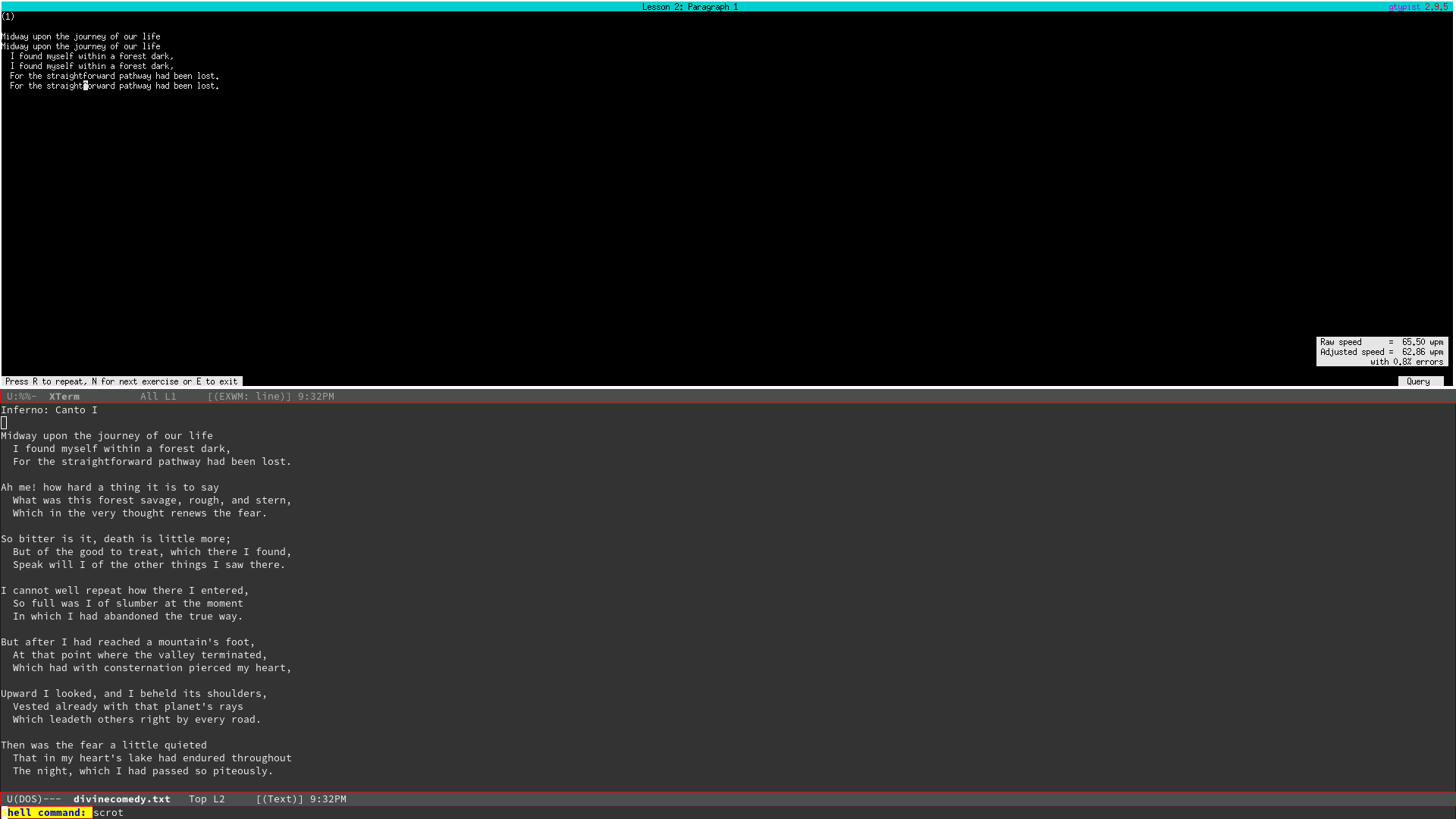GNU Typist and Project Gutenberg- Practice typing with classic literature
I’ve recently gotten into mechanical keyboards and typing.
I feel like this should have happened before. I’ve put in an enormous amount of time behind keyboards. But I’ve never experienced the simple joys of tactile mechanical switches and RGB backlit keys pulsing in a pleasing pattern. I could touch type using my own style but I wasn’t particularly fast. Now within a week of practicing using GNU Typist on a Happy Hacking Keyboard and a Glorious PC Gaming Race GMMK Tenkeyless White Ice Edition, I regularly get up to 70 wpm and average around 50, with proper form. It feels good being “adequate.” I hope to crack 100 someday.
But now I’m running out of GNU Typist drills!
Some of the lessons in gtypist are a real hoot. I’ve been copying old-timey correspondence about purchasing ancient computers and floppy disks, and even one about happening upon an old man who has been beaten possibly to death. And once you get hooked to these stories, it’s all over! So I had an idea. I would take classic literature from Project Gutenberg and convert them into gtypist lessons so that I can both read and practice typing at the same time.
How to convert a book into typing drills
Download the book (The Divine Comedy in this case)
wget https://www.gutenberg.org/cache/epub/1001/pg1001.txt -O divinecomedy.txt # Clean up any weird characters dos2unix divinecomedy.txt
Trim the headers and footers
Don’t have anything special for this. I edited in emacs to trim down past the table of contents and remove the footer.
Make a .ktouch file with each paragraph a lesson
Here’s some python code to split the paragraphs into lessons. It’s looking for blank lines and inserting the paragraph number as the lesson name so you can bookmark your progress easily.
f = open("divinecomedy.txt", "r") o = open("divinecomedy.ktouch", "w") i = 0 o.write("Paragraph " + str(i) + "\n") for line in f: if line == "\n": i = i + 1 o.write("\n") o.write("Paragraph " + str(i) + "\n") else: o.write(line) # Sample output return open("divinecomedy.ktouch","r").readlines()[0:8]
| Paragraph 0\n | Inferno: Canto I\n | \n | Paragraph 1\n | Midway upon the journey of our life\n | I found myself within a forest dark,\n | For the straightforward pathway had been lost.\n | \n |
Convert the ktouch lesson to a gtypist lesson
To do this you’ll need the tools that come with gtypist. I downloaded this file to get them.
perl -I ~/gtypist-2.9.5/tools ~/gtypist-2.9.5/tools/ktouchOLD2typ.pl divinecomedy.ktouch
Run with gtypist
Install gtypist and run:
gtypist divinecomedy.typ
Enjoy!
If you used the divine comedy, you now have 1728 paragraphs of divine comedy to type and read through.
Here’s one of my attempts (above 60 wpm, not bad) on the first paragraph:
